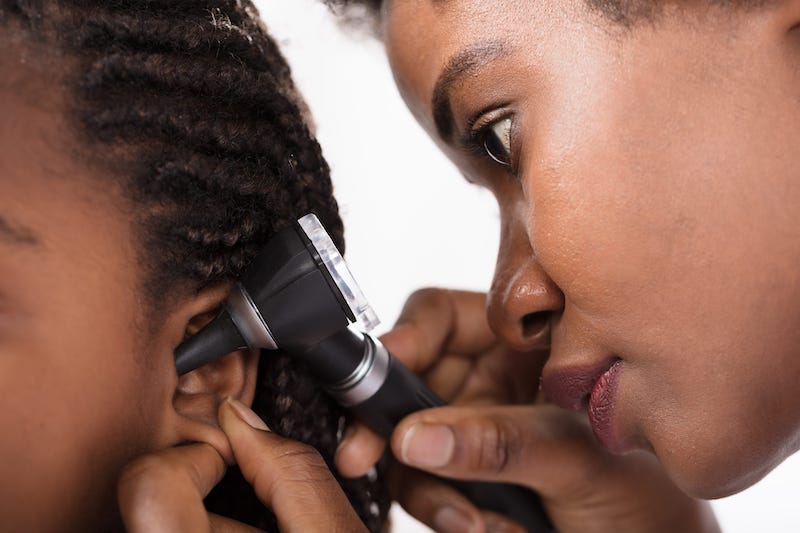Asian, Hispanic, and Black children are much less likely to see ear, nose, and throat (ENT) doctors, or otolaryngologists, and receive ear tubes for recurring ear infections, according to research presented at the ANESTHESIOLOGY 2023 annual meeting.
Ear tube placement (tympanostomy) is the most common outpatient procedure in U.S. children. The tubes reduce ear infections by letting air flow in and out of the middle ear and draining the fluid that builds up. The procedure requires a referral to an ENT, and if left untreated, ear infections can cause hearing loss and speech delays.
“For the first time, our study found there are significant differences in the rate of ENT office visits for children with ear infections, based on race and ethnicity,” says Yu Shi, MD, MPH, lead author of the study and assistant professor of anesthesiology at Mayo Clinic, Rochester, Minnesota. “There are likely multiple reasons why the rate of ENT office visits for these children varies. For example, they might have been given a referral to an ENT, but their parents decided not to go because they didn’t follow their doctor’s advice due to lack of trust, language barriers or lack of information. It’s also possible they couldn’t attend the appointment due to work or transportation issues. All of these factors can contribute to disparities in health care.”
The researchers analyzed 187,776 children, using a claims database of privately insured patients in a large U.S. health plan, who had three or more ear infections in six months or fluid in the ear for more than three months. According to the study, 148,472 children were white, 18,266 were Hispanic, 12,153 were Black, and 8,885 were Asian. Based on standard clinical guidelines on the management of otitis media (ear infections), all met criteria for referral to an ENT.
ENT Visitation Details
In total, only 85,175 (45.3%) children were evaluated by an ENT—69,269 were white, 7,384 were Hispanic, 5,513 were Black, and 3,009 were Asian. White children had the highest rate of ENT office visits (46.7%). The rate of ENT office visits for Black children was slightly lower (45.4%), followed by Hispanic children (40.4%), while Asian children had the lowest rate (33.9%). Compared to white children, Asian children were 30% less likely, Hispanic children were 16% less likely, and Black children were 7% less likely to attend ENT visits after being diagnosed with ear infections that might benefit from ear tube placement.
Further reading: Researchers Develop Vaccine to Curb Childhood Ear Infections
Among the children who were evaluated by an ENT doctor, 52,265 received ear tube placement—43,462 were white, 3,971 were Hispanic, 3,365 were Black, and 1,467 were Asian. However, Asian children were 26% less likely, Hispanic children were 17% less likely, and Black children were 7% less likely to have ear tubes placed, compared to white children.
“Racial and ethnic disparities clearly play a role in ear tube placement,” says Shi. “Our study suggests that Asian, Hispanic, and Black patients may need more support in decision-making for surgery. More research is needed to help us better understand what is contributing to this lower access.”





